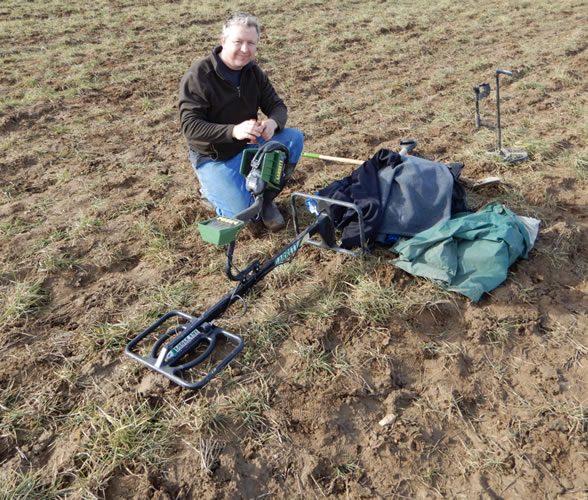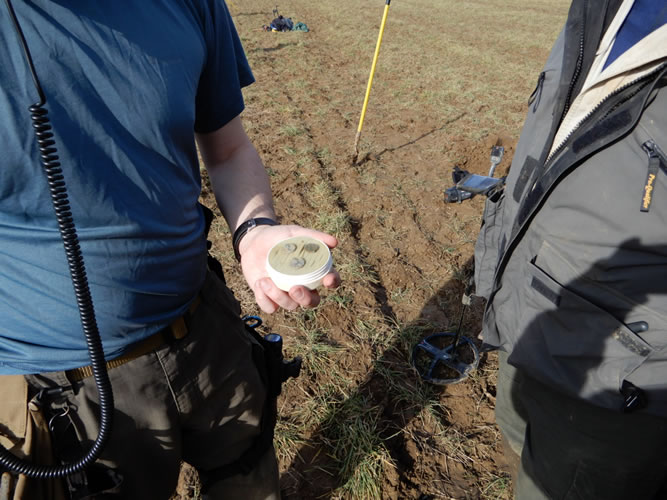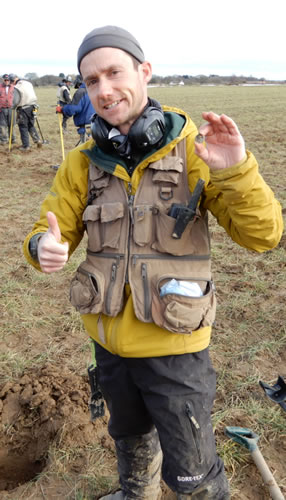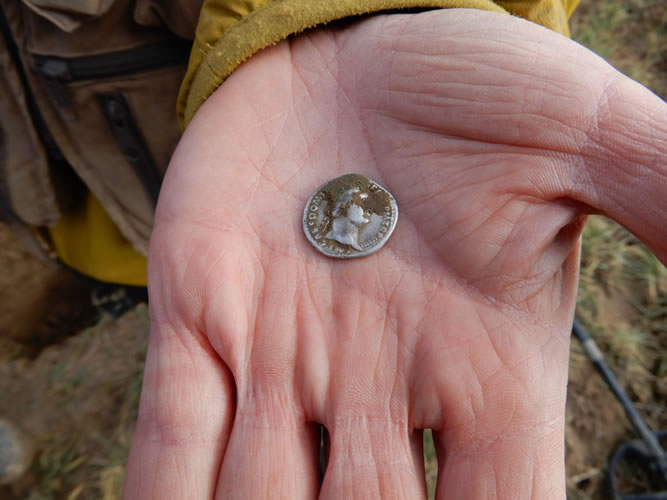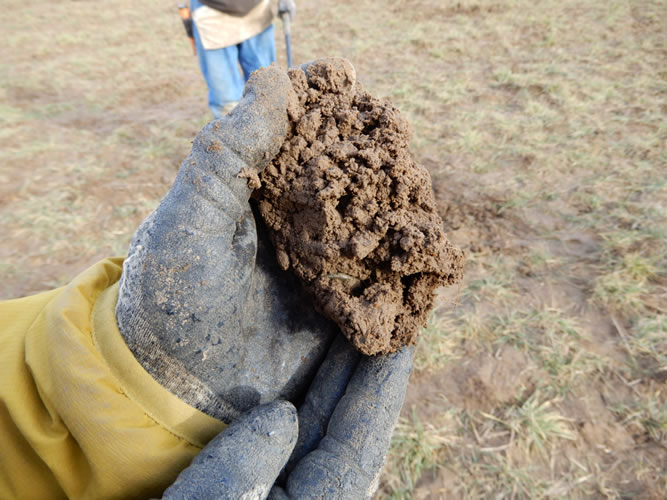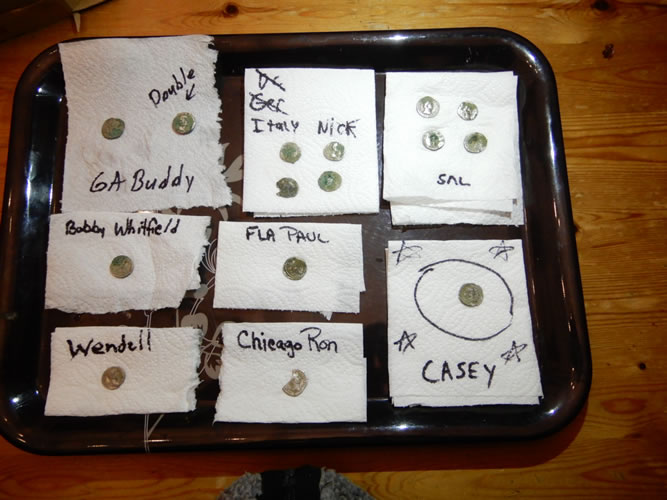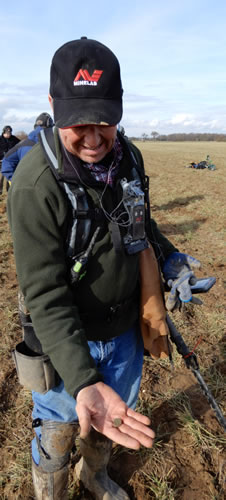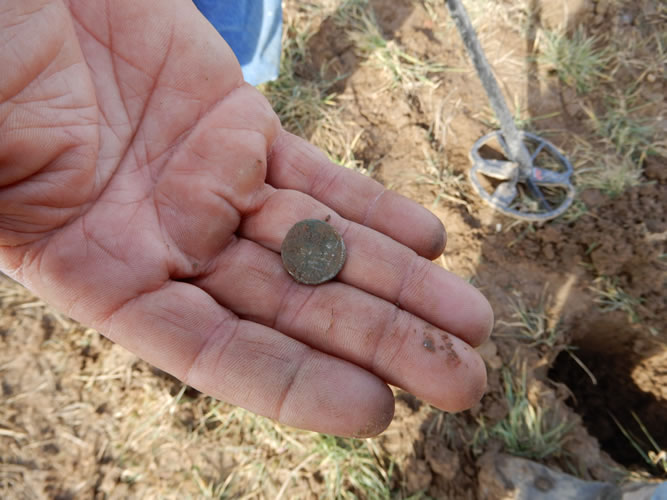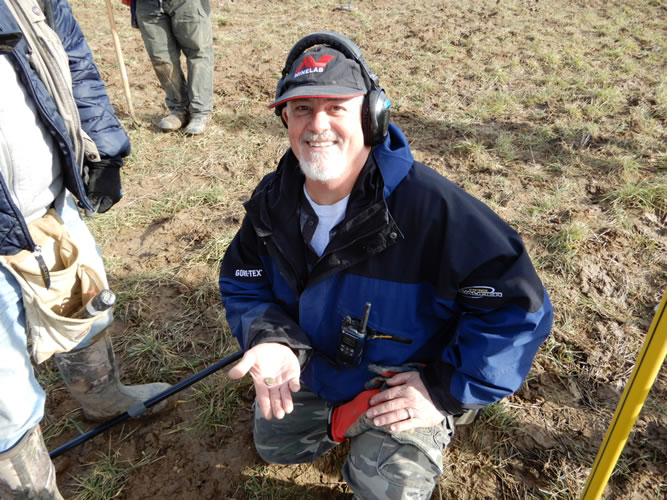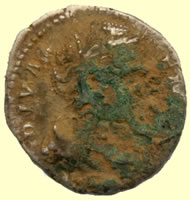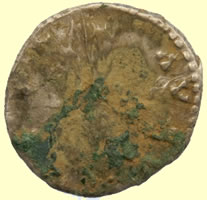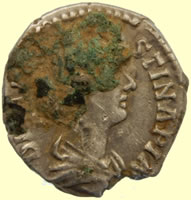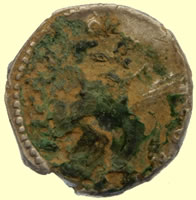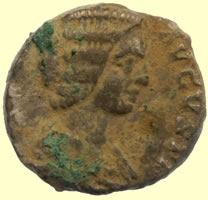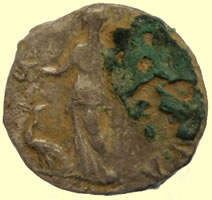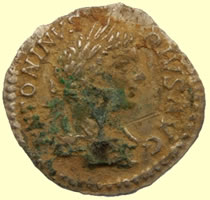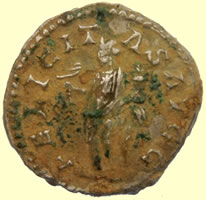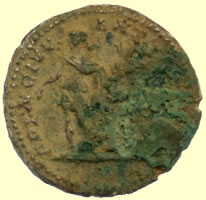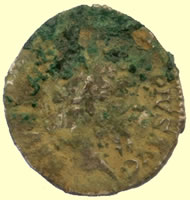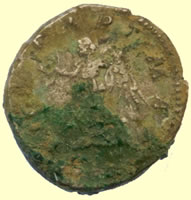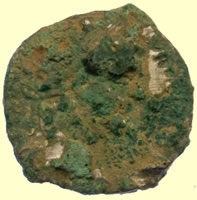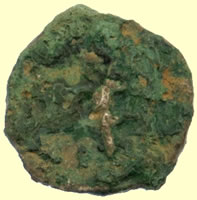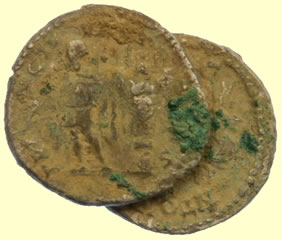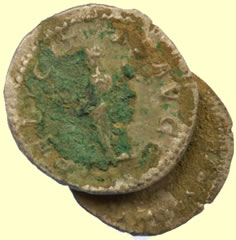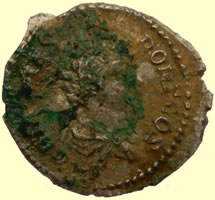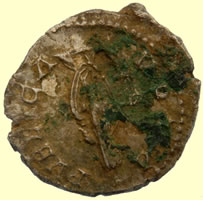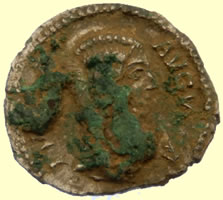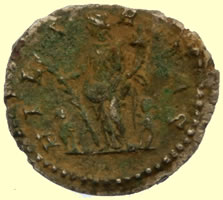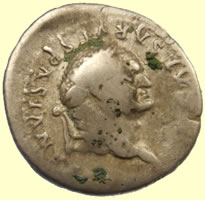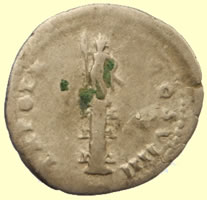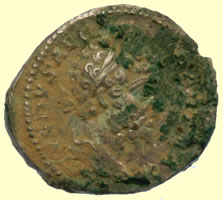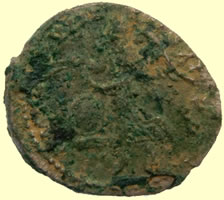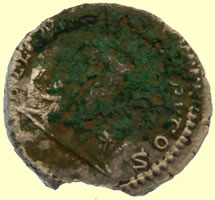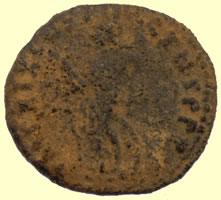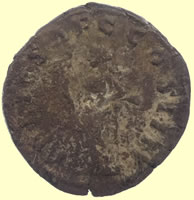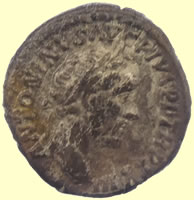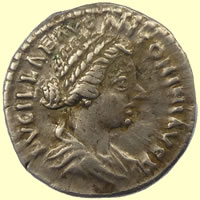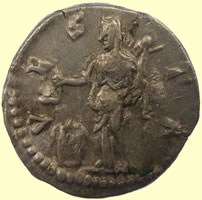
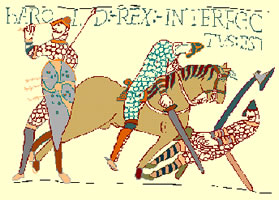
Metal detecting holidays in England with the World's most successful metal detecting club.20 years plus.
Twinned with Midwest Historical Research Society USA.
Roman silver hoard 2018 page |
Potential Treasure case 2018 T451 - Multiple finders- 44 Roman silver hoard Aquiried by Colchester Musuem Initial discovery by Mo Dan Comments and ID's of the coins by Mark Lehman
Mo Dan's discovers the hoard with the first 6 Roman silvers - checking the area with a hoard hunter
Dc Nick pops 4 silvers with his CTX
One of Louisiana Sal's 5 Roman silvers in the side wall of the hole 11 inches down
One of Louisiana Sal's 5 Roman silvers poking out of a clod of dirt
15 Romans on a tray
Another great Roman silver
Searching for more
Ga Buddy found 3
Ashley (in the hole) and Tx Scott digging a trench to try and find more
Hoard 1 - 3.17g, 17mm Faustina the elder, wife of Antoninus Pius and mother of Faustina the younger. Posthumous issue by Antoninus pius, Faustina died 141 so it dates between 141-160. Reverse is too profoundly encrusted to determine type, although it might have the legend AVGVSTA (if so, the photo is upside-down) otherwise, it’s a legend ending in “AVG” and could be any of literally dozens of types.
Hoard 2 – 2.89g,18mm Trajan, 96-117, Mars advancing left carrying trophy and holding spear. Not enough of the reverse legend is clear to date it accurately, but the reverse reads something like this: P M TR P (xxx) COS (x VI) P P S P Q R – This seems to be the only piece which does not date to the Severan era in this batch.
Hoard 3 - 3.46g, 17mm Posthumous issue for Faustina the younger by her husband Marcus Aurelius – Faustina II died in 175 and M. Aurelius outlived her until 181 – so that’s the time frame, 175-181. Again, the reverse is so profoundly encrusted that it’s not possible to determine the reverse type
Hoard 4 – 2.48g,15mm Julia Domna, wife of Septimius Severus and mother of Caracalla (and Geta) so her coins’ time frame is 193-217. Obverse: [IVLIA] AVGVSTA. The reverse is IVNO [REGI]NA Juno standing left with peacock at her feet. This type was issued at both Rome and Laodicea (in the mid east) they can only be told apart by style – this appears to be a Rome mint product.
. (young) Caracalla ANTONINVS PIVS AVG / FELICITAS AVGG. Felicitas standing left holding caduceus and cornucopiae (the 2 G’s indicates two co-Augusti, Caracalla and Septimius) Mint of Rome 205 A.D., RIC 124, RSC 64. Roman 2nd/3rdC silver hoard Mark Lehman's initial ID below with poor quality pictures taken on the guys cell phones. I just sent him larger pictures for better ID. Okay, the top left (obverses) is Julia Domna, wife of Septimius Severus – probably issued by Severus, there is another group of coins in her honor struck by Caracalla. This appears to be the fairly common JVNO REGINA, Juno with peacock reverse, but the legend is only partial due to the smallish flan not presenting enough room to strike-up all of the reverse.
Hoard 6 - 3.06g, 18mm Caracalla as Caesar – 195-198. Obverse legend is probably [M AVR ANTON] CAES PONTIF. The reverse is PRINCIPI IVV[ENTVTIS] Caracalla in military garb standing left holding baton and scepter, trophy to his right. Mint of Rome, 197, RIC 13, RSC 505.
Hoard 7 – 3.18g, 18mm Septimius Severus, 193-212. [SEVERVS] PIVS AVG / [VICT] PART MAX Victory walking left holding wreath and palm, Mint of Rome, 204.
Hoard 8 - 3.17g, 17mm . I think what little of the portrait is visible suggests Antoninus Pius, 139-161 – reverse totally obscured but seems to be a figure (possibly Victory) standing or walking left holding object (wreath?) in outstretched right hand.
Hoard 9 &10 – 6.91g,17mm (one coin dia) only part of one coin’s obverse is visible, it looks like it may be “[A]NTON[…] indicating probably Caracalla, reverse is two standing figures and legend is too badly obscured to read, but I suspect it’s a duplicate of # 6 and the reverse is PRINCIPI IVVENTVTIS. 9b reverse is FELICITAS AVG, Felicitas likely standing left holding caduceus and cornucopiae and obverse is too well covered by 9a to be readable at all. Both pieces are almost certainly from the Severan era since that’s pretty much when all the others are on the time line, except for Trajan, of course, and Antoninus Pius. The Severan era included quite a few individuals, both male and female, between 193-238.
Mark Lehman's initial ID below with poor quality pictures taken on the guys cell phones. I just sent him larger pictures for better ID. Okay, the top left (obverses) is Julia Domna, wife of Septimius Severus – probably issued by Severus, there is another group of coins in her honor struck by Caracalla. This appears to be the fairly common JVNO REGINA, Juno with peacock reverse, but the legend is only partial due to the smallish flan not presenting enough room to strike-up all of the reverse. I’ll do what I can to describe and date them on a coin-by-coin basis, but the ones that are totally obscured by deposits and/or corrosion products that weren’t able to be ID’d before are still obscure.
Hoard 11 – 2.67g, 19mm Your photo of the reverse is upside-down – the legend is VOTA PVBLICA – who’s on the obverse is a bit more challenging question, although it looks like one of the youthful Severans.
Hoard 12– 3.07g, 20mm . Julia Domna, wife of Septimius Severus (193-217) IV[LIA] AVGVSTA draped bust right / HILARITAS Hilaritas standing left holding palm-branch and cornucopiae, Caracalla and Geta as children to her left and right. Struck 208, RIC 557; RSC 79
Hoard 13- 2.70g, 19mm Vespasian (69-79) [IMP C]AESAR VESPASIANV[S AVG] (counter-clockwise) laureate head of Vespasian right / TR POT X COS VIII naked radiate figure standing facing atop rostral column, struck 79. RIC (119 old vol II)- 1064-5; RSC 559. It should be obvious that this does nt belong to the same hoard/loss as all the similarly encrusted Antonine and Severan denarii from up to a century and a half later.
Hoard 14 – 3.28g,19mm Septimius Severus (193-211) SEVERVS AVG [PART MAX?] laureate head right / [VICT AETERN?] Victory hovering left holding garland above shield set on base. Struck 200, RIC 170; RSC 670.
Just sent Roman silver hoard coins 11 to 14 off to Mark Lehman for ID
|
 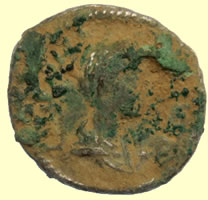 |
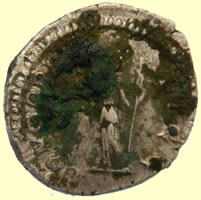  |
||
Roman silver hoard coin - reported to museum and sent for ID 2.80g, 19.10mm Casey Hoard coin 15 – silver denarius |
Roman silver hoard coin - reported to museum and sent for ID 2.82g,14.65mm Sal4 Hoard coin 16 – probably a match for coin # 15, both have the same reverse type and the portrait clearly appears female here, so probably Plautilla, Caracalla’s wife 202-205 AD. |
||
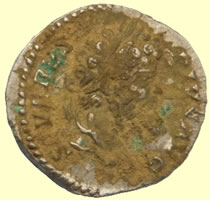 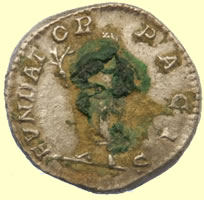 |
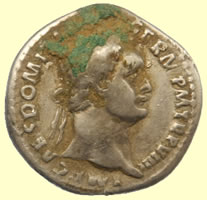 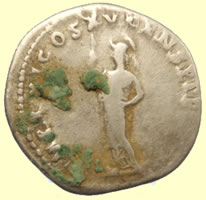 |
||
Roman silver hoard coin - reported to museum and sent for ID 2.59g,18.02mm Sal2 Hoard coin 17 – Septimius Severus, 193-212 AD. |
Roman silver hoard coin - reported to museum and sent for ID 3.33g,19.23mm Sal 1 Hoard coin 18 – Domitian, 81-96 AD. |
||
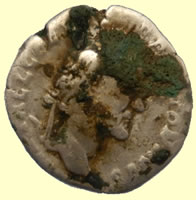 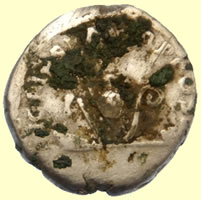 |
 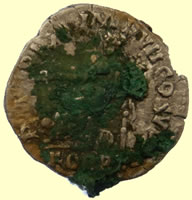 |
||
Roman silver hoard coin - reported to museum and sent for ID 2.82g,14.65mm Sal3 Hoard coin 19 – Antoninus Pius, 139-161 [IMP T] AEL CAES [HA]DR ANTONINVS laureate head of Antninus Pius right |
Roman silver hoard coin - reported to museum and sent for ID 3.12g, 19mm Nick Hoard coin 20 – Commodus, 177-192 |
||
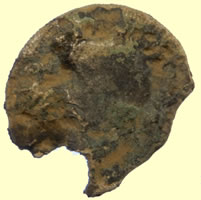 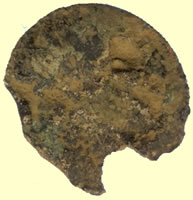 |
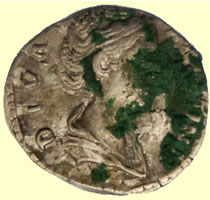  |
||
Roman silver hoard coin - reported to museum and sent for ID 2.37g,19mm Nick1 Hoard coin 21 – Sorry, there are limits to what I can accurately ID from photos – re-orientation is conjectural at best – there simply isn’t enough here to distinguish this from any other badly chipped and heavily encrusted denarius, although given the rest of this hoard, the Severan era is most likely for a date (193-238 AD.) |
Roman silver hoard coin - reported to museum and sent for ID 2.55g,17mm Nick3 Hoard coin 22 – Posthumous commemorative issue by Antoninus Pius for his wife, Faustina Sr. (died ~ 140 AD) |
||
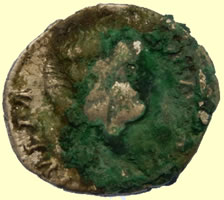 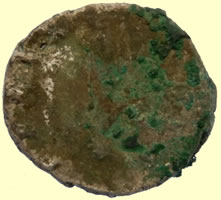 |
 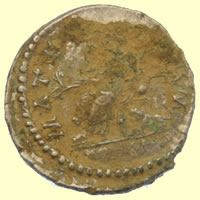 |
||
Roman silver hoard coin - reported to museum and sent for ID 17mm,3,50mm Nick2 Hoard coin 23 – probably Julia Domna (195-217) wife of Septimius Severus – however there were quite a number of Julias who had denarii struck in their names during the Severan era |
Roman silver hoard coin - reported to museum and sent for ID 2.61g,18mm Fl Paul Hoard coin # 24 |
||
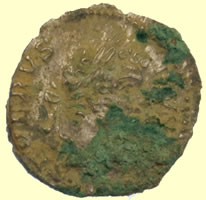 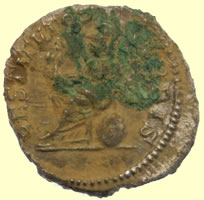 |
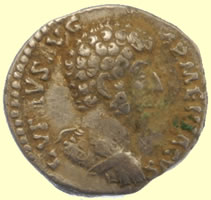 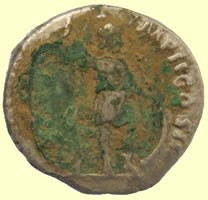 |
||
Roman silver hoard coin - reported to museum and sent for ID 2.60g,19mm Buddy Hoard coin # 25 |
Roman silver hoard coin - reported to museum and sent for ID 3.05g,16mm Wendell Hoard coin # 26 |
||
 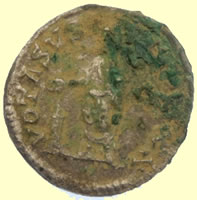 |
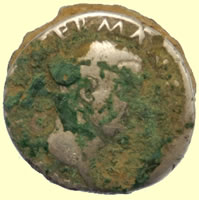  |
||
Roman silver hoard coin - reported to museum and sent for ID 3.23g,17mm Bobby Hoard coin # 27 |
2 Roman silver hoard coin stuck together - reported to museum and sent for ID 6.50g,19mm Buddy Hoard coins # 28 & 29 |
 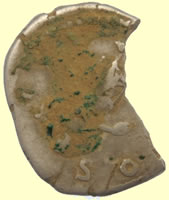 |
|
Roman silver hoard coin - reported to museum and sent for ID 2.35g,20.0mm Ron Hoard Coin # 30 |
|
Roman silver hoard coin No 31 - reported to museum and sent for ID 2.77g,17mm This one required me to take a leap of faith to interpret the reverse – I can’t unconditionally guarantee this ID, so what may be found under the crud could be significantly different - I am working mainly on the basis of the 5 legible letters at the end of the legend and virtually nothing else. It is, (of course) Caracalla as a very young Augustus once again; coin is ca. 202 AD. That fits-in well with the dating of most of the other silver hoard coins which tend to be from the earlier Severan era. Those significantly older are as worn as one would expect some of them to be – as in the case of the Domitian denarii that are at least as a century earlier than the bulk of the denarii seen so far. Mark
Roman silver hoard coin No 32 - reported to museum and sent for ID 19mm,3.63g This one (# 32) wanted to give me a hard time. It wasn’t until I realized this was a fully encrusted silver denarius and not an Æ semis or quadrans that I was able to get a clue who we have here. As it turns out, it’s Domitian, again – dates to 89 AD. It raises questions (for me) as to its connection to the rest of the “hoard” find because although it would not be the earliest piece by any great margin, none of the others are anywhere nearly so profoundly dirt/sand encrusted. |
|
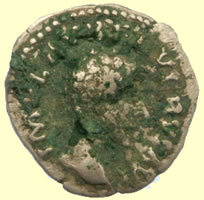 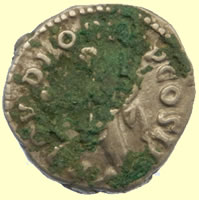 |
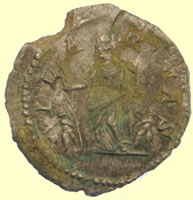 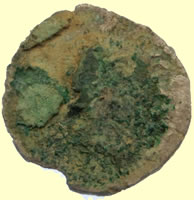 |
Roman silver hoard coin 33- reported to museum and sent for ID 17mm,3.22g |
Roman silver hoard coin 34 - reported to museum and sent for ID 3.00g, 20.0mm |
Hoard coin # 33: Hoard coin 34: |
|
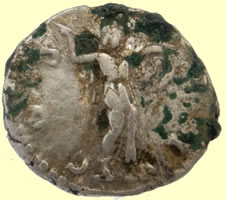 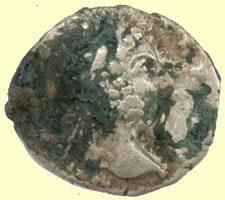 |
|
Roman silver hoard coin No35 - sent for ID and reported as hoard addendum to museum 18mm, 3.11g Well, I can’t 100% accurately date it since the part which determines the date is obscured on the obverse (TR P year number at end of obverse legend) but this same type of denarius was struck for M. Aurelius as Augustus from 168-171, the only change being the TR P number on the obverse: |
|
Roman silver hoard coin addendum No36 - reported to museum 2.81g,17mm That seems to be from the earlier range of the coins in the hoard I helped you with ID’s on last year. This is a common type and one which is repeated in several consecutive years later in his reign. You are lucky to have nearly 100% legible legends here as it might have been a bit more involved guesswork to figure out what was happening on the reverse if the legend were not so clear. Unfortunately I have no prepared photos of my own of anything even particularly similar for comparison’s sake – but this is from acsearch: https://www.acsearch.info/search.html?id=2007687 |
|
Mint Roman silver hoard coin addendum No37 - reported to museum 3.23, 17mm Super Lucilla – that’s the way you’d like to see them come out of the ground, no doubt. This one’s so nice I don’t need to scare-up a photo of a decent specimen – this photo does the job! |
|
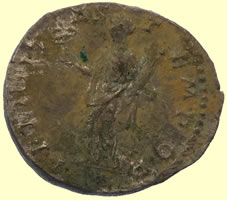 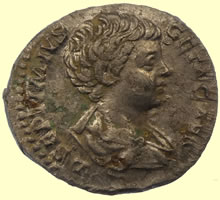 |
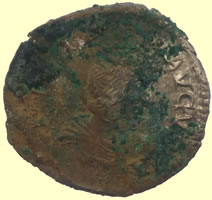 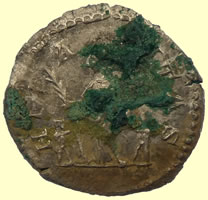 |
Roman silver hoard coin addendum No38 - reported to museum Hoard 38 – 2.87g, 18mm
Geta, Caesar, 198-209. AR denarius, Mint of Rome 203 AD
|
Roman silver hoard coin addendum No39 - reported to museum Hoard 39 -3.06g, 20mm Julia Domna (W. of Sept. Severus) 193-217, AR denarius, Mint of Rome, 208 AD. |
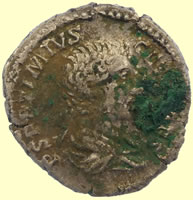 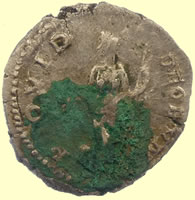 |
 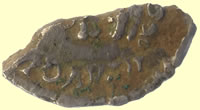 |
Roman silver hoard coin addendum No40 - reported to museum 3.17g, 19mm Geta, Caesar, 198-209, silver denarius, Mint of Rome, 206 AD. |
Roman silver hoard coin addendum No41 - reported to museum 0.73g,13mm |
 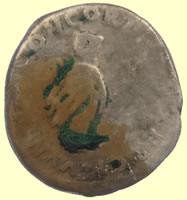 |
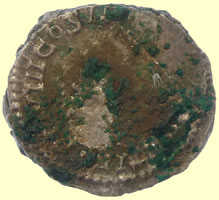  |
Roman silver hoard coin addendum No42 - reported to museum 2.99g,17mm
Mark |
Roman silver hoard coin addendum No43 - reported to museum 3.30g, 19mm Caracalla, 198-217 AD. AR denarius, Mint of Rome, 205 AD. Mark |
  |
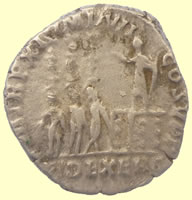 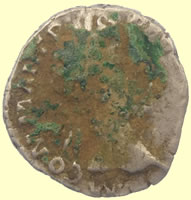 |
Roman silver hoard coin addendum No44 - reported to museum 3.22g, 19.13g |
Roman silver hoard coin addendum No45 - reported to museum and sent for ID 2.56g,17.03mm Commodus. Son of Marcus Aurelius, his sole reign marked the end of the era of “The Good Emperors”. He slowly went crazy, and by the end of his reign/life had convinced himself he was the reincarnation of Hercules and was regularly fighting wild beasts in the arena. This was not considered correct or appropriate behavior for an emperor, to say the least – plus he was an all-around shit to everyone, highly paranoid, and tended to have any foe, real or imagined, executed. He was portrayed, extremely inaccurately from an historical standpoint, as the main antagonist in the movie “Gladiator”. They made him evil enough, but nowhere nearly so bat-poo unhinged as he was in real life. Commodus, sole reign, 180-192 A.D. AR denarius issued 186 A.D.
Mark |
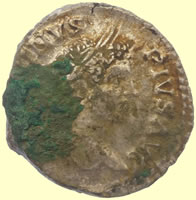 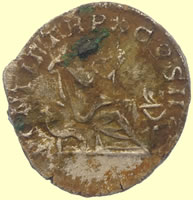 |
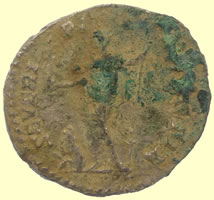 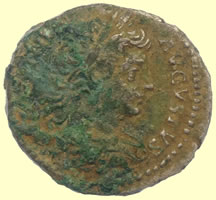 |
Roman silver hoard coin addendum No46 - reported to museum and sent for ID 2.79g,18.68mm Continuing with the theme of less-than-pleasant emperors: Caracalla (198-217 AD), as co-emperor with Septimius Severus, 198-209 AD. AR denarius, issued 207 AD. Rx: PONTIF TR P X COS II securitas enthroned right, at her ease in seat with cornucopiae as arms; head propped on right hand, holding scepter with left; small altar before her. Mark |
Roman silver hoard coin addendum No47 - reported to museum and sent for ID |
 |
|
